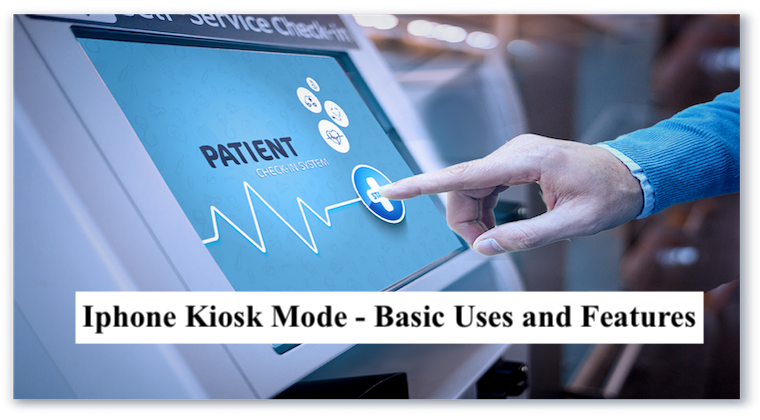iPhone Kiosk Mode - Basic Uses and Features

iPhone kiosk mode is a restricted mode that locks an iOS device to execute a single or a bunch of applications in the foreground while disabling all other features and apps.
iOS kiosk mode, also known as Apple kiosk mode, a feature offered by Apple assists organizations in improving customer experience and engagement by providing a restricted environment where approved operations can be performed. This process of restricting access is also called iOS app lock.
Modes of iPhone Kiosk Mode
The kiosk software in Apple works in two modes.
- Single app mode: In this mode, an administrator locks down a supervised iOS device to run one app only. This mode ensures that only a single app remains active in the foreground and that all other apps and features are blocked.
Moreover, additional features like volume buttons or touch can also be disabled to impede users from changing the configurations and settings of the device. The most common examples of single-app mode include POS terminals, digital signage, and web shortcut kiosks.
- Multi-app mode: This mode ensures that a group of approved apps or web shortcuts required to perform job responsibilities should run on an iOS device whereas all other apps or configurations remain inactive. Enabling this mode results in the optimal use of the device as it avoids distractions and augments security.
Features of iPhone Kiosk Mode
Apart from the phone kiosk app lock mechanism, iOS kiosk software provides several other features which are discussed below.
- Customization of home screen layout for branding: It is an important feature that enables the admin to tailor the home screen according to the organization’s preferences. It can be used to promote the brand by setting the organization’s logo, standard orientation, customized wallpaper, and specialized fonts on the home screen of iOS devices. The usage of a uniform layout on corporate iOS devices helps in providing a consistent user experience.
- Peripheral controls via screen customization: It lets the admin rearrange the sequence of apps or web icons for providing conducive access in case of multi-app mode. Likewise, the frequently accessed apps can also be added to Dock for ease of users. Moreover, IT administrators can enable/disable screen rotation, volume buttons, Bluetooth, ringer switch, Wi-Fi, sleep buttons, GPS, auto lock, camera, and zoom options. In this way, the user is unable to perform restricted actions by any means.
- Autonomous apps: This mode allows the admin to temporarily restrict the iOS device to a particular app that precludes users from accessing other features, apps, and configurations for a specific time interval or until some predefined task is performed. Once this mode is active, the user cannot switch between other apps, terminate/exit the app, or simply return to the home screen. Likewise, this mode locks other features like spell check, auto-correct, etc. as well to avoid distraction.
Applications of iPhone Kiosk Mode
Apple devices are quite popular and widely used in almost all sectors for their features such as easy deployment and enhanced security. Some of the applications of iOS kiosk mode are discussed below.
- Healthcare: In hospitals, iOS devices are equipped at the patient’s bedside to continuously monitor health conditions and deal with emergencies. Moreover, these devices are widely used in accessing patient records and medical reports for making timely informed decisions. So to make sure that the devices are secure and can be used for specific purposes, kiosk mode is of supreme importance. iPhone kiosk mode is also helpful in compliance with privacy acts.
- Transportation and logistics: In this sector, iOS devices assist in tracking the location of drivers and ensuring timely deliveries.
- Education: In education, this helps in conducting classes and examinations by allowing approved applications that provide study materials or experimentation setups while blocking unnecessary gaming and social media apps.
- Retail: The kiosk-enabled iOS devices can be used to provide self-check-out counters, digital signage, and POS terminals.
One can benefit a lot from the use of kiosk software, only if you know how to use it right. You can use it in various sectors and get benefir for your organization.